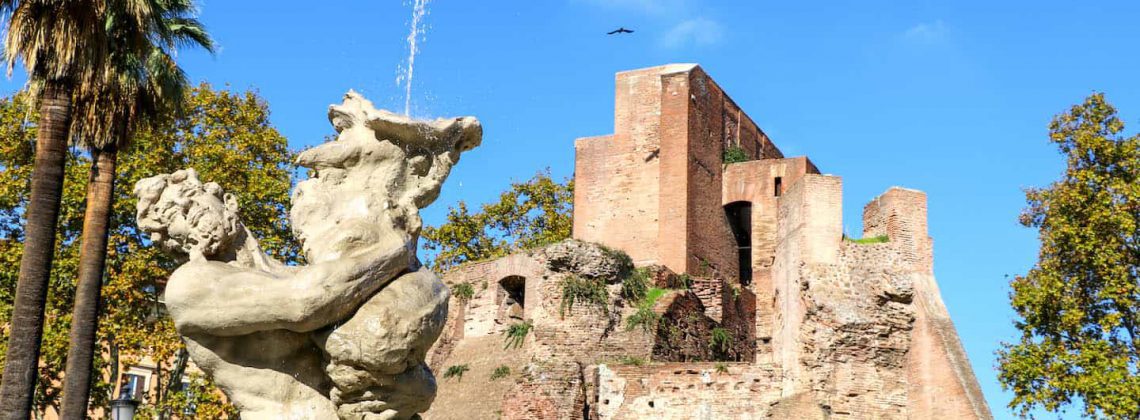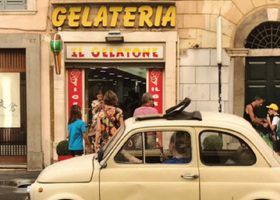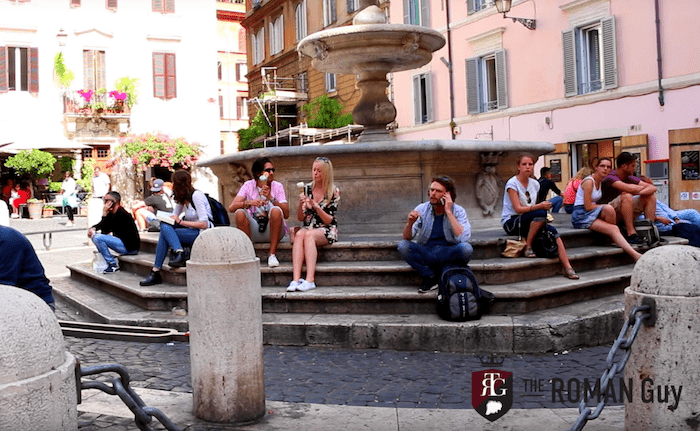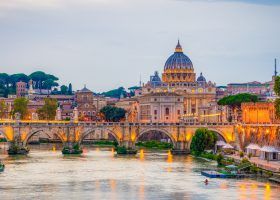Are you near Termini Station in Rome and wondering if there’s anything important to see? There certainly is! In this article, we share the top things to do near Termini Station and Monti, including the most famous attractions, monuments, and museums.
Pro Tip: Planning what to do on your trip to Rome? Bookmark this post in your browser so you can easily find it when you’re in the city. See our guide to Rome for more resources to help you plan your trip. Also, check out our top-rated Rome tours—the best way to fully appreciate the Eternal City.
Top Things To Do Near Termini Station and Monti
Termini Station is the point of entry and departure for many visitors to Rome. There’s a lot to do nearby, so make sure you don’t just pass through. Next to Termini Station, is the historical district of Monti.
This eclectic neighborhood in the center of Rome is full of hidden gems. There are also some great places to eat near Termini Station and Monti. When you have fully explored the area, check out some other areas in the toggle menu below.
1. Palazzo Massimo alle Terme (Museo Nazionale Romano)
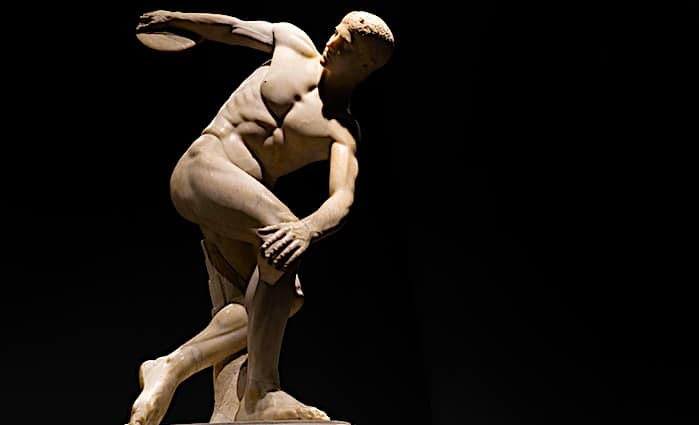
The Palazzo Massimo alle Terme has a very large and prominent collection including a captivating version of Discobolus of Castelporziano, aka Discus Thrower. Very similar to many of the galleries on this list, you simply won’t find crowds here. It’s a welcome relief from the crowds at the Vatican.
You can stroll into Palazzo Massimo with a reservation, buy a ticket, and enjoy tons of incredible works of art. As with all the museums on this list, we highly recommend a guided tour to bring context to the works. We can provide a private tour with an expert guide, simply contact us. If you’re going it alone, here are the most notable works of art to see:
- Frescoes of Villa Farnesina
- Portonaccio Sarcophagus
- Collection of Ancient Coins (massive and impressive collection)
- Sleeping Hermaphroditus
- Via Cassia Mummy
- Ludovisi Hermes
- Tiber Apollo
- Discobolus of Casteloporziano
Address: Largo di Villa Peretti 2 | Admission Cost: €7 + cost of the exhibition if one exists (normally €3 extra)
2. Basilica Santa Maria Maggiore
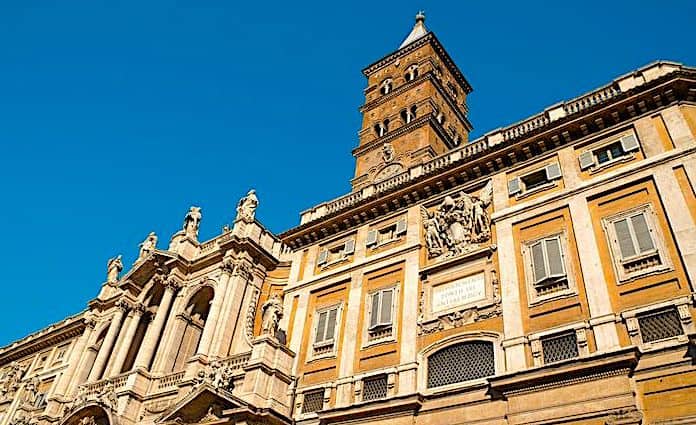
There are four major basilicas in Rome and this one is a must-see. It’s a quick 10-minute walk from the train station. The charming legend states that back in A.D. 352, Pope Liberius (Pontif A.D. 352 – 356) had a dream in which the Virgin Mary told him to build a church where he found snow.
As it happened, on August 5th, it snowed on Esquiline Hill. There, he built a small church and called it Santa Maria Della Neve (St. Mary of the Snow). This day is commemorated every year on August 5th with the tradition of laying white petals out in the Pauline Chapel.
The church you see today was built in 432 under Pope Sixtus III (Pontiff A.D. 432 – 440), although it has seen major reconstruction over the years. Amazingly, not only are there multiple mosaics in the central nave remaining from this early period but also the main triumphal arch. The main mosaic behind the high altar (apsidal) by the master Jacopo Torriti dates from the 13th century.
S. M. Maggiore Basilica Facts:
- It was one of the very first churches to be dedicated to the Virgin Mary (after the Council of Ephesus where Mary was proclaimed the mother of God).
- In the Crib of the Nativity, it is said that there are fragments of wood from the holy crib of Jesus.
- During the massive plague of A.D. 590, Pope Gregory the Great ordered seven processions around the city to appease the wrath of God. In the end, he ordered that the processions converge on Santa Maria Maggiore instead of St. Peters.
- St. Jerome, who is credited with translating the Bible into Latin in the 4th century, is buried here.
- When the Papacy returned to Rome after Avignon, the pope set up shop first at Santa Maria Maggiore due to the Lateran church’s poor state.
- Famed architect Gian Lorenzo Bernini is buried here.
Address: P.za di Santa Maria Maggiore
3. Baths of Diocletian (Museo Nazionale Romano)
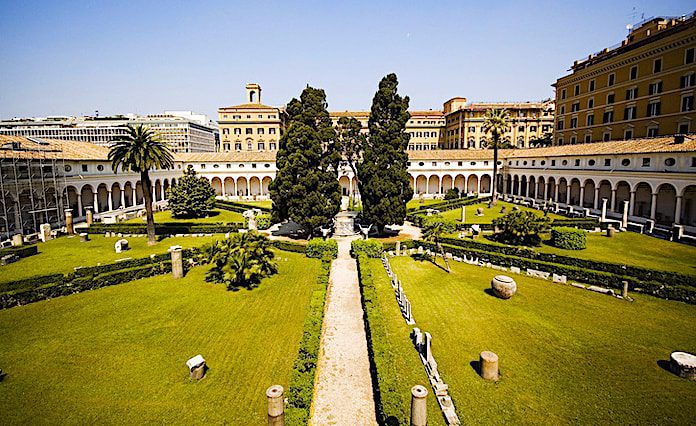
As a licensed tour guide of Rome, this is by far one of my favorite museums along with the Palazzo Massimo. When I have free time, I visit this museum as it has a lot of applied learning opportunities.
When you enter the museum today, you’re actually entering a very small part of what was once a massive public thermal bath, built by Emperor Diocletian in A.D. 306. The bathhouse would have covered a whopping 32 acres (17 hectares).
Most importantly, it could hold 3,000 potential bathers at one time. To put that into perspective, Seaworld in Orlando, although not a bathhouse but a water park, receives on average only 1,885 people a day.
Unlike in the Middle Ages when people bathed once a year, the ancient Romans bathed daily and were also clean-shaven. A typical day at the baths could last hours. They may play some sports while there and then get a massage before heading over to the tepidarium (warm water bath), the caldarium (hot water bath), and then the frigidarium (cold water bath). They would typically bath in that order.
In addition, there was a natatio, which was a huge swimming pool. The natatio in these baths was an astounding 43,000 square feet (4,000 square meters) in size—almost the size of a football field. Here are the four main sections of the museum to see:
- The Natural History of Pre-Roman Civilization
- Written Communication of the Romans
- The Courtyard by Michelangelo
- Remains of the bathhouse
Address: Viale Enrico de Nicola | Admission Cost: €9
Popular Tours from Rome
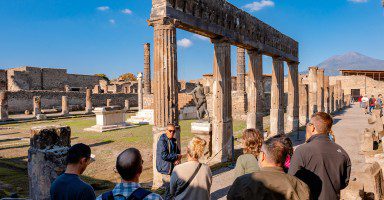
Best Seller
Unforgettable Rome Day Trip to Pompeii and Sorrento
Making a day trip from Rome to Pompeii and the Amalfi Coast can be daunting, with long travel times, complex routes, and tricky logistics to manage. Our full-day tour eliminates the stress, offering comfortbale transport straight to Pompeii. With an archaeologist guide, explore the ancient ruins without the hassle. Then, unwind with free time in Sorrento’s coastal charm. Led by a local guide and small group, this trip makes experiencing Italy’s highlights easy and enjoyable—all in one day.
See prices and more info
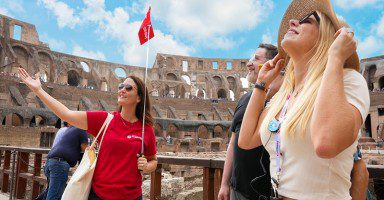
Best Seller
Rome in a Day Tour with Colosseum & Vatican Museums
Seeing the best of Rome in a single day might seem like a big undertaking, but our expertly designed tour makes it effortless with skip-the-line tickets, included transportation, and engaging guides to lead the way. In just 7 hours, you’ll visit renowned sites like the Sistine Chapel, Colosseum, Trevi Fountain, and Pantheon. With fascinating stories at every stop, you can skip the stress and immerse yourself in the vibrant heritage and culture of Rome all in one remarkable day.
See prices and more info
Not ready to book a tour? Check out our Rome Guide for more info.
4. Horti Sallustiani (Gardens of Sallust)
The Gardens of Sallust are a massive ancient garden that was once owned by Julius Caesar himself. Visit these gardens if you’re interested in walking through a former property of the great general himself and seeing something 99.99% of tourists don’t see.
The gardens were later given to Tiberius who used them as a public garden, as did the emperors that followed. When Visigoth King Alaric sacked Rome in A.D. 410, they entered the gates where the gardens were. Afterwards, they were abandoned for centuries.
In the 17th century, Cardinal Ludovisi bought the area and built his huge palace where the ancient gardens had been. During these excavations, many famous classical statues were found, including the Dying Gaul and Gaul Killing Himself. They are located near Termini Station and don’t post regular hours. We recommend you call to see when they are open.
Address: Piazza Sallustio 21
5. The Ancient Wall Around Rome (Servian Wall)

During the reign of Emperor Aurelian (A.D. 270 – 275), a protective wall was built around the entire city of Rome, which was 12 miles (19 kilometers) long. If you happen to venture outside the historical center of Rome in almost any direction, you will almost certainly come into contact with the walls.
What many people don’t know is that an even earlier wall was built around the city in the fourth century B.C. and if you know where to look, you can still see it today. It was called the Servian wall and named after the sixth Roman King Servius Tullius.
The wall was built using huge blocks of grey tufa stone. The best place to see a nicely preserved area of this stone is actually right next to Termini Station. If you are walking into Termini Station from the main entrance a massive wall of this Tufa stone will be on your left-hand side—definitely hard to miss.
By the time of the first Emperor, Caesar Augustus, there wasn’t really a need for the wall since the Pax Romana had started and, at that point, no enemy of Rome would have dared to try and attack Rome for at least two more centuries.
Address: Servian Wall
6. Basilica di Santa Prassede
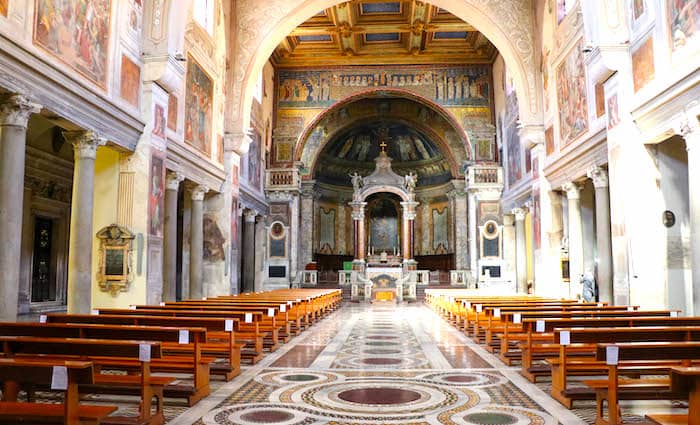
The origins of this church supposedly go back to the middle of the second century. However, we have to take the church at their word since no remains have been discovered from that period, yet. During St. Peter’s visit to Rome, he stayed at the house of Pudens whose daughter, Prassede, traditionally was the Saint’s first Christian convert.
This was a Titulus church, meaning it was one of the first churches built in the city and likely first built in the middle of the fourth century under Pope St. Siricius (Pontiff 384 – 399). The current church that you’ll enter dates from the ninth century and was built by Pope Paschal I (817 – 824) to replace the crumbling earlier church.
What To See:
While there are two entrances, I recommend you enter through the main, southern entrance on Via di San Martino ai Monti. This allows you to walk through the original facade of the ninth century.
What you’ll notice as soon as you walk in is the various fragments of marble and stone of different origins. When they built churches back in the day, they would take the stone from classical, pagan temples and mix and match them to get a sufficient amount of stone. A few interesting items to see when you visit:
- A purple disc—In the back of the nave, you will see a round piece of purple marble. This supposedly marks the spot of an earlier well where St. Prassede used to store all the bones of Martyrs.
- A marble slab—To the back of the left aisle of the nave, there’s an unassuming piece of stone where St. Prassede used to sleep.
- Tomb of G.B. Santoni—Along the right aisle near the front you’ll find a sculpture designed by none other than Gian Lorenzo Bernini. He was only 17 years old at the time.
- Plaque—Found by the Santoni tomb, the plaque lists the relics placed in the church. It is an 18th-century copy of the original from the 13th century.
- The crypt—All churches have a crypt and this one is decorated by the famous Cosmati Brothers. The 13th-century mosaic floors make it truly special. It also holds the relics of both St. Prassede and her sister St. Pudenziana.
Address: Via di Santa Prassede, 9/a
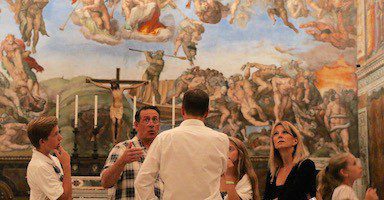
Best Seller
Privileged Entrance Vatican Tour with Sistine Chapel
This our most popular and longest-running Vatican tour to date. You’ll enter the Vatican Museums an hour before the public opening and see the breathtaking Sistine Chapel. Admissions are included and our English-speaking guides do a wonderful job bringing the museums to life!
See Prices
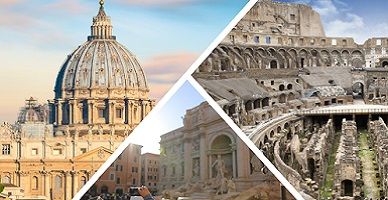
Customer Favorite
Rome in a Day Tour with Vatican, Sistine Chapel, Colosseum, and More!
Looking to get much of your sightseeing done in one day? This tour enters the Vatican an hour before opening and visits the Colosseum along with other sites like the Pantheon, Piazza Navona, and Trevi Fountain. All admissions and transportation are included as well as a licensed, English-speaking guide!
See Prices
Not ready to book a tour? Check out our Vatican Guide for more info.
7. The Trophies of Marius
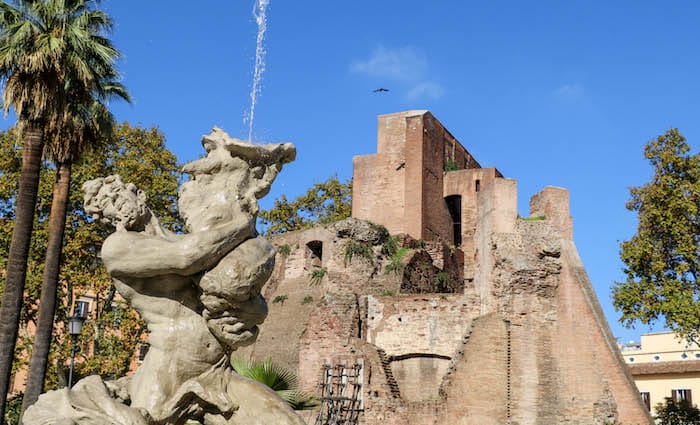
A short walk from Termini Station will take you to a gigantic square called Piazza Vittorio. You can still see traces of the splendor that once covered this square, but unfortunately, in recent times it has become quite neglected.
Known mostly today for its massive food market and various ethnic cuisines such as Indian and Chinese, it is worth a visit in the daytime as you pass through to see the older locals who still frequent the area.
In the north corner of the square, you have a hidden gem that most people never even notice called the Trophies of Marius or Nympheum Alexandria. This imposing brick structure is an ancient Roman fountain built on top of an aqueduct.
Not only can you still see fragments of the aqueduct, but the size of the fountain gives you a clear idea of the massive building projects which took place 2,000 years ago. This particular fountain was built at the time of Emperor Alexander Severus around A.D. 226. The name “Trophies of Marius” comes from the two marble statues which were relocated from here and now reside on the Campidoglio near Piazza Venezia.
Address: P.za Vittorio Emanuele II
8. Piazza della Repubblica
There are still many examples of buildings in Rome that have retained the structure of ancient sites. A perfect example is the Piazza della Republicca. Originally, it was called Piazza dell’Esedra due to the exedra (massive concave structure) from the ancient Baths of Diocletian (see above). It is definitely the most beautiful square near Termini Station and one of the most iconic in Rome.
The first time I came to Italy, I remember standing on the sidewalk near the piazza just staring in wonder at the cars racing in and out of this roundabout with no crashes happening. After some time, I realized that the trick is to be an offensive driver and let organized chaos reign.
In the middle of all this chaos is the beautiful fountain of the Naiads, shooting water into the air, and adding a unique calm that only Rome can achieve. The fountain was built in the late 19th century and the sculptures of the Naiads were placed there in 1901 by Mario Rutelli. In the center of the fountain is Rutelli’s Glauco statue, which symbolizes the dominion of man over nature.
Address: Piazza della Repubblica
9. Santa Maria della Vittoria
Rome is home to over 400 churches and this one is truly one in 400. The Discalced Carmelites decided to build a church on this spot at the beginning of the 17th century. As the excavations began, they soon discovered a beautiful, ancient statue known today as the Borghese Hermaphroditus. It attracted the attention of Scipione Borghese who was the nephew of Pope Paul V and church benefactor.
He immediately claimed the statue for the church and took it away to his treasured collection, which we know today as the Borghese Gallery. As a token of his gratitude, he financed the rest of the church from his own pocket. I think it turned out to be a pretty good deal for the monks.
Bernini and St. Theresa
The first thing you’ll notice when you walk inside is the Cornaro Chapel, which is down on your left-hand side. There, tucked in the corner, you’ll see a masterpiece by the master himself, Gian Lorenzo Bernini. The name of the statue is the Ecstasy of Saint Theresa and it was the biggest scandal of the 17th century.
The work depicts the moment of St. Theresa’s encounter with an angel:
“I saw in his hand a long spear of gold, and at the iron’s point there seemed to be a little fire. He appeared to me to be thrusting it at times into my heart, and to pierce my very entrails; when he drew it out, he seemed to draw them out also and to leave me all on fire with a great love of God. The pain was so great, that it made me moan; and yet so surpassing was the sweetness of this excessive pain, that I could not wish to be rid of it.”
Bernini obviously took her words to be allegorical, alluding to something more of an intimate encounter with a man. The look of pleasure on her face scandalized all of those who saw it. This statue has attracted renewed interest after Dan Brown’s book, “Angels and Demons”, which references the statue.
Address: Via Venti Settembre, 17
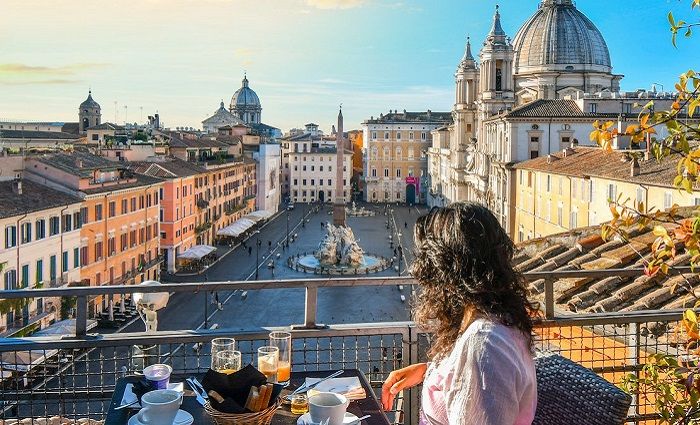
Where To Stay in Rome
Rome has a rich cultural history and many iconic landmarks to explore. Plan where to stay in the magnificent Eternal City in the best neighborhoods.

